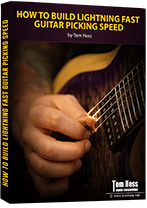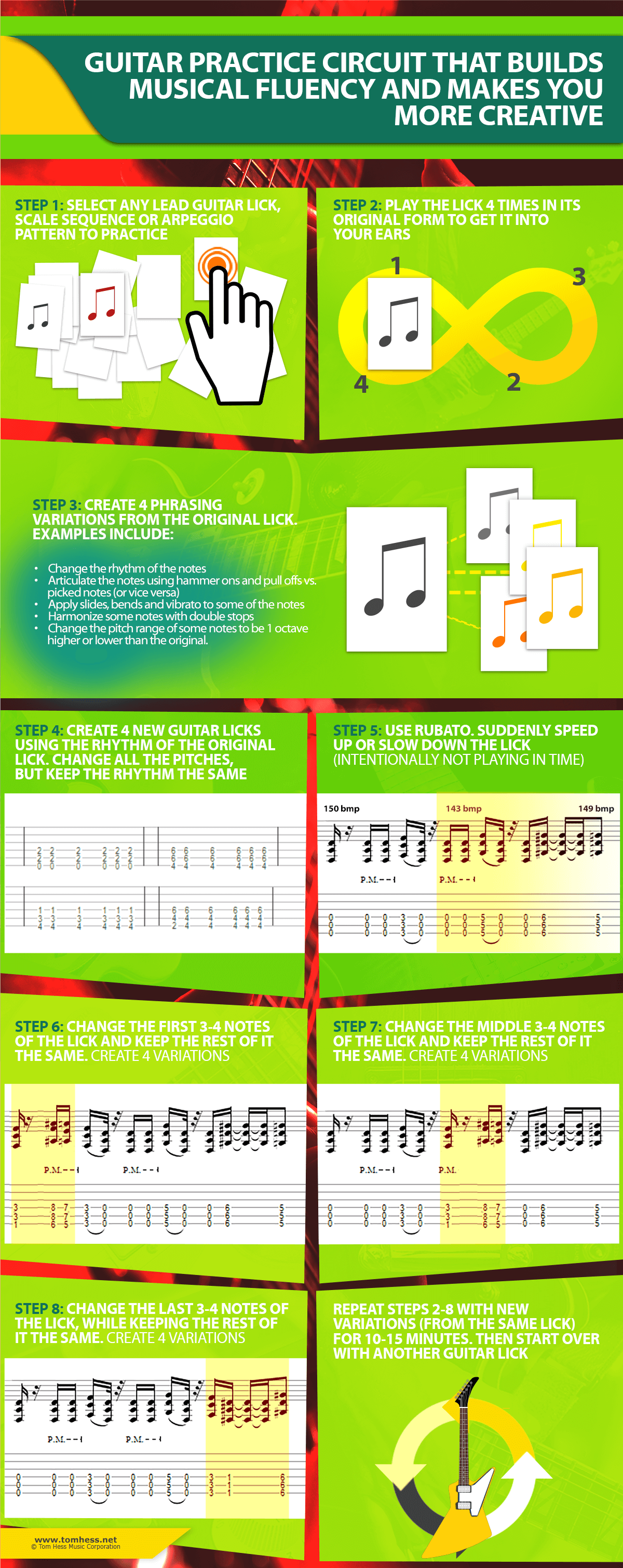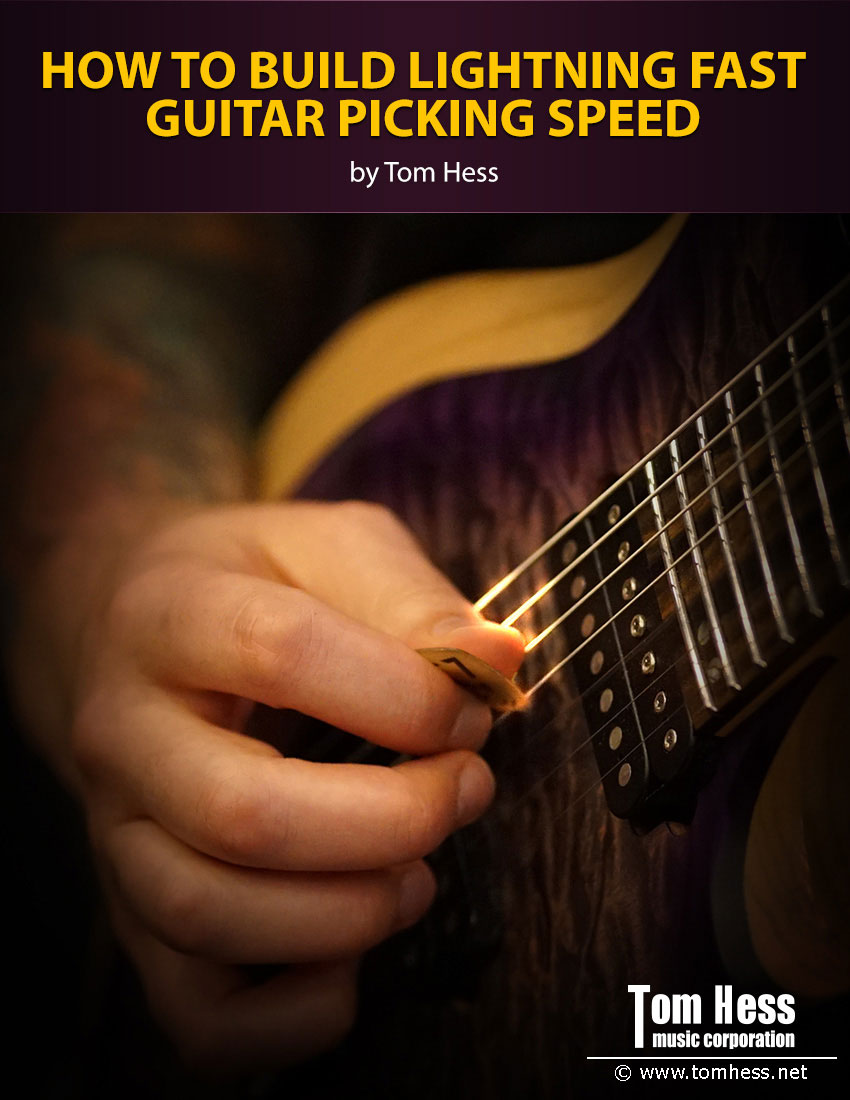How To Practice Guitar To Master Guitar

EMAIL TO GET ACCESS
By submitting your info, you agree to send it to Tom Hess Music Corporation who will process and use it according to their privacy policy.
If you can’t practice guitar 8 hours per day, there is no hope for you to ever master the guitar or play guitar like a pro, right?
Wrong!
Because the results you get from your guitar practice come down to:
1. Your guitar practice habits (and guitar practice skills).
2. Practicing guitar consistently (at least 5 times per week).
(The amount of time you practice guitar comes in a distant 3rd in importance.)
And here is the best part:
You may not be able to practice guitar 5 times more than you do right now...
But you can certainly make your practice habits more effective and squeeze 5-10x more gains out of each minute you spend with the guitar right now.
In this guitar practice article, I’ll show you how.

EMAIL TO GET ACCESS
By submitting your info, you agree to send it to Tom Hess Music Corporation who will process and use it according to their privacy policy.
To begin...
Check out this video that lays out the most powerful principles for practicing guitar that have helped thousands of my students to master guitar:
Now, let’s go deeper.
Here are 5 more guitar practice secrets that make it possible for the average person to play guitar like a pro (without practicing guitar 8 hours per day):
Guitar Practice Tip #1: Learn Guitar Geometrically
If you’re like most guitar players, your approach to practicing guitar probably looks like this:
Pick one skill. Work on it until it’s perfect. Then move on to the next skill.
Sounds reasonable, right?
Until you realize how insane that would be in literally any other context.
Imagine cooking spaghetti... but only one strand at a time.
You boil the water, cook one piece, drain the pot, put that one noodle on a plate... then start over for the next strand.
Four hours later, you’re left with a cold, gummy mess - and a hungry, annoyed family.
That’s what linear guitar practice looks like.
It’s also one of the biggest reasons most people never master guitar or play guitar like a pro.
When you learn and practice guitar linearly - trying to perfect one skill before touching the next – here is what happens:
- you end up with many holes in your playing (as there are many key skills you never even begin practicing)
- you never work on tying skills together (a key skill that gives you the ability to play guitar like a pro), so you always feel like a beginner/early intermediate player
As a result, you waste a ton of guitar practice time just spinning your wheels and never get close to being able to master guitar.
The better way?
Learn guitar geometrically.
This means developing multiple core guitar skills together. It means organizing your guitar practice so your phrasing, rhythm, ear training, fretboard knowledge, technique, creativity, and musical expression all grow alongside each other — not in isolation.
Here’s what that looks like in action:
- While practicing lead guitar technique, you also train your phrasing by varying the rhythms and articulation of each lick.
- While working on rhythm guitar, you also strengthen your fretboard awareness by using new voicings or inversions.
- While doing ear training, you also improve your improvisation skills by trying to recreate melodies by ear in real time.
This is what smart (geometric) guitar practice looks like.
Bonus: this method helps you avoid the most common frustration players face - feeling like they’re “good at technique” but bad at making music.
Or “good at theory” but lost when they try to improvise. That kind of imbalance happens when you only practice skills in isolation instead of learning how to connect them.
So, if you want to master guitar…
Instead of looking for individual skills to work on…
… look for a holistic list of skills that relate to your goals and work on all of them at the same time.
When you start thinking and practicing this way, your guitar playing begins to improve much faster and you’ll have a much easier time learning to play guitar like a pro.
Watch this video where I explain the philosophy of practicing guitar in a geometric way in more detail:
Guitar Practice Tip #2: Use Focus Rotation
Most guitar players go on autopilot when they practice guitar.
They pick an exercise, repeat it over and over again, and hope something improves.
But this kind of mindless repetition leads to very slow progress.
The better way of practicing guitar is to use a guitar practice technique called focus rotation.
Focus rotation means playing an exercise over and over, while your brain chooses a certain element of playing to focus on with that exercise (e.g. your timing) – ignoring everything else.
Then, after a few minutes, you rotate your focus to another area (e.g. excess body tension)… then – after a few minutes – another area (e.g. noise control).
You keep rotating your attention in this way until your guitar practice time is up (with that exercise) – improving every part of your guitar playing in the process, not just 1-2.
Here’s why this works so well:
When you try to improve everything at once, your brain gets overwhelmed and it’s hard to make progress
But when you rotate your focus, your concentration resets with each new thing you pay attention to. You can notice mistakes much better (and fix them more quickly).
 Practice Less To Get More Results
Practice Less To Get More ResultsBecome highly effective with your guitar practicing time.
 Create A Guitar Practice Schedule
Create A Guitar Practice ScheduleLearn 8 steps to creating your own guitar practice schedule.
 Powerful Guitar Practicing Secrets
Powerful Guitar Practicing SecretsDownload a free 100+ page eBook
with guitar practice tips.
Here’s how to do it:
Step 1: Choose a short lick, exercise, or phrase to work on.
Step 2: Set a timer for 2 minutes and focus on just one element. For example:
- Timing
- Picking articulation
- Left-hand relaxation
- Tone and clarity
- Note transitions
- Phrasing
Step 3: When the timer goes off, switch to a new focus area. Don’t stop playing. Just change what you’re listening and paying attention to.
Step 4: After rotating through 3 or 4 areas of focus, take a short break or move on to another part of your guitar practice.
You can use focus rotation to improve any area of your playing. You can also use it to connect multiple skills at once, which ties directly back to geometric learning.
Watch this video to learn more about focus rotation:
Guitar Practice Tip #3: Set Micro Goals
Most guitar players have vague goals.
They say things like:
“I want to get better at improvising.”
“I want to improve my picking.”
“I want to master guitar someday.”
The problem?
These goals are too big and too unfocused to guide your guitar practice. They don’t tell you what to do today and they don’t show you if you’re getting closer to your goal when you finish practicing.
The solution is to set micro goals.
Micro goals are goals tiny enough to achieve in a single guitar practice session. That’s how you know if you’re getting closer to your longer-term goals and are on track to being able to master guitar.
Here’s how to apply this to your own guitar practice:
Step 1: Take a big goal you care about - like “play guitar like a pro” - and break it down into individual skills. Think of things like:
- Improving your guitar speed by 20%
- Playing the pentatonic scale shapes in 16th notes at 90 bpm
- Learning all the notes on the fretboard
- Syncing your hands up
- Writing a new guitar solo
Step 2: Choose one or two of those items and create a micro goal for today’s practice session. For example:
- Improving how you hold the pick and getting used to the new pick grip
- Memorize shapes 3, 4 and 5 of the pentatonic patterns.
- Learn where the A notes are on every string.
- Outline your guitar solo before you play a single note.
Step 3: Practice while focusing on your micro goal. Here is an example of what this looks like:
When you combine micro goals with geometric learning and focus rotation, your guitar practice becomes way more effective, even if you’re not spending any more total time practicing guitar.
Question: “Tom Hess, what if I don’t know what my micro goals should be when I'm practicing guitar?”
Answer: That is something a great guitar teacher can easily help you with.
A good guitar teacher can assess your strengths and weaknesses (as they relate to your goals) and prescribe the exact micro goals to focus on that will enable you to play guitar like a pro (and possibly even master guitar).
Guitar Practice Tip #4: Practice Musical Application
Many guitar players make this mistake:
They spend all their practice time working on technique, scales, and theory... but never actually use those skills to make music (e.g. improvise, write and jam with others… or even simply play guitar solos over a backing track).
As a result, they get good at exercises, but not at playing music.
If you want to play guitar like a pro, you must use your skills in real musical situations - and make this a normal part of your guitar practice.
Here’s one possible way to do it:
When you learn a scale, don’t just play it in one shape and think you’re done.
Practice applying it by: playing it all over the guitar (in all the scale patterns). Create scale sequences with the scale.
Most importantly: apply the scale when soloing over backing tracks and learn to create guitar licks using the scale.
Watch this video to see a demonstration of how to create guitar licks using scales:
Do all this before you move on to learn another scale on guitar. Don’t assume you’ve mastered the scale just because you can play one shape up and down.
When you learn a rhythm, apply it to creating guitar riffs. You can do this either by inserting notes (or chords) into that rhythm…
… or by taking other guitar riffs you know (either ones from your favorite songs or guitar riffs you’ve written)…
… and modifying their rhythm to the new rhythm you’ve created.
The more effort you put into applying your guitar skills together, the faster you’ll improve.
Guitar Practice Tip #5: Integrate Your Guitar Skills Together
Integration may seem similar to application, but its purpose is different.
Application is about using a single skill in a musical context.
Integration is about connecting several skills together.
This can mean – for example – combining guitar techniques to play advanced guitar licks, like this, for example:
… or, it could mean using several techniques and musical skills together to build your fluency and musical creativity.
Want an example?
Here is a cool guitar practice circuit that helps you to tie your musical skills together and become more creative:

And here is the key guitar practice secret to remember:
It’s important to work on integration (and application) of musical skills long before each skill is mastered in isolation.
This is all part of the Geometric approach to learning guitar.
Working on integration makes all your guitar skills improve at the same time and enables you to truly master the guitar.
Question: “But Tom Hess, won’t doing integration practice (before each skill is mastered) lead to bad habits in my guitar playing?”
Answer: No, because you can (and should) continue refining your musical skills in isolation too. By doing this (and combining isolation guitar practice with application and integration training), you avoid bad habits and become a good guitar player even if you don’t have hours per day to practice.
Now that you know how to practice guitar to master guitar, I want to show you how to improve your picking speed, so you can play the fast and technical guitar licks most guitarists only dream about. I show you how in my free eGuide: How To Build Lightning Fast Guitar Picking Speed. Download it today and discover the guitar speed secrets most guitarists will never know.


Master the guitar quickly with proven online guitar classes.
